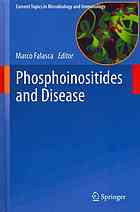

Most ebook files are in PDF format, so you can easily read them using various software such as Foxit Reader or directly on the Google Chrome browser.
Some ebook files are released by publishers in other formats such as .awz, .mobi, .epub, .fb2, etc. You may need to install specific software to read these formats on mobile/PC, such as Calibre.
Please read the tutorial at this link: https://ebookbell.com/faq
We offer FREE conversion to the popular formats you request; however, this may take some time. Therefore, right after payment, please email us, and we will try to provide the service as quickly as possible.
For some exceptional file formats or broken links (if any), please refrain from opening any disputes. Instead, email us first, and we will try to assist within a maximum of 6 hours.
EbookBell Team

4.3
68 reviewsPhosphoinositides (PIs) are minor components of cellular membranes that play critical regulatory roles in several intracellular functions. This book describes the main enzymes regulating the turnover of each of the seven PIs in mammalian cells, some of their intracellular functions and some evidence of their involvement in human diseases. Due to the complex inter-relation between the distinct PIs and the plethora of functions that they can regulate inside a cell, this book is not meant to be a comprehensive coverage of all aspects of PIs signalling but rather an overview on the current state of the field and where it could go from here. Phosphoinositide and inositol phosphates interact with and modulate the recruitment and activation of key regulatory proteins and in doing so control diverse functions including cell growth and proliferation, apoptosis, cytoskeletal dynamics, insulin action, vesicle trafficking and nuclear function. Initially, inositide signaling was limited to the PLC pathway; however, it is now clear that all the seven phosphoinositides and more than 30 different inositol phosphates likely have specific signaling functions. Moreover there is a growing list of proteins that are regulated by inositol signaling. This has raised the question as to how inositol signaling can control diverse processes and yet maintain signaling specificity. Controlling the levels of inositol signaling molecules and their subcellular compartmentalisation is likely to be critical. This meeting will bring together scientists from different backgrounds to discuss how understanding inositol signaling may be used to target complex human diseases that manifest themselves when inositol signaling is deregulated.